Old Town
| From SOMP2010 Excursion to Tallinn Old Town, Tallinn, Estonia |
| From SOMP2010 Excursion to Tallinn Old Town, Tallinn, Estonia |
About Old Town
Passages under Old Town
Medieval Old Town | Lower Town | Medieval churches | Latin Quarter| Town wall, towers & gates | Upper Town | Beyond the Old Town | Twisting cobblestone lanes and iron street lamps. Gothic spires and medieval markets. Cappuccino and Wi-Fi. This is the city's famous Old Town. If you're looking for that mix of historic ambience and cutting-edge culture that defines Tallinn, you'll find it here. Built up from the 13th to 16th centuries, when Tallinn – or Reval as it was known then – was a thriving member of the Hanseatic trade league, this enclosed neighbourhood of colourful, gabled houses, half-hidden courtyards and grandiose churches is, quite rightly, the city's biggest tourist draw. And the fact that it's all neatly packaged within a mostly-intact city wall and dotted with guard towers gives it an extra dose of fairytale charm. |
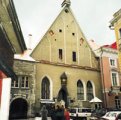 Great Guild Hall was the second largest secular building after the Town Hall in Medieval Tallinn. Great Guild Hall was the second largest secular building after the Town Hall in Medieval Tallinn.The Great Guild was an organization uniting the city's wealthy merchants, and intended for protecting its members' common interests. Tallinn's mayor and the city fathers were also chosen from among the members of the Great Guild...  |
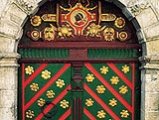 House of the Brotherhood of Black Heads is nearly the only preserved Renaissance building in Tallinn. House of the Brotherhood of Black Heads is nearly the only preserved Renaissance building in Tallinn.The Brotherhood of Black Heads emerged in 1399. The Brotherhood united the young, single merchants before they could be accepted into the Great Guild, as well as foreign merchants who were residing in Tallinn for longer periods but not permanently...  |
Medieval Churches 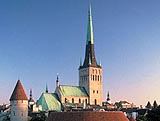 St. Olav’s Church was the tallest church in Medieval Europe. The earliest data on St. Olav’s Church come from 1267. Little is known about the building of this Gothic style church and its early years, but there may have been a church on this location as early as the 12th century, alongside the Scandinavian market yard. ... St. Olav’s Church was the tallest church in Medieval Europe. The earliest data on St. Olav’s Church come from 1267. Little is known about the building of this Gothic style church and its early years, but there may have been a church on this location as early as the 12th century, alongside the Scandinavian market yard. ... |
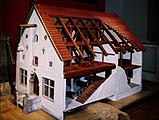 Tallinn City Museum’s exhibition covers the history of the city from the 13th century to the 1990’s. Located in the home of a medieval merchant in the heart of the Old Town, the City Museum introduces Tallinn with a completely new, attractive permanent exhibition, which is called “The City Which will Never be Completed”... Tallinn City Museum’s exhibition covers the history of the city from the 13th century to the 1990’s. Located in the home of a medieval merchant in the heart of the Old Town, the City Museum introduces Tallinn with a completely new, attractive permanent exhibition, which is called “The City Which will Never be Completed”... |
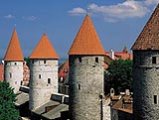 Nunna, Sauna and Kuldjala Towers Nunna, Sauna and Kuldjala TowersThese three medieval towers, and the portion of the wall that connects them, are among the few towers open to tourists. Visitors can climb up and imagine what it felt like to guard the town against would-be invaders, but the wall is even more popular for its picturesque view of the red-tiled roofs of Old Town and Toompea hill...  |
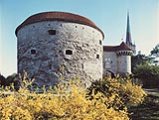 Great Coastal Gate (Suur Rannavärav) and Fat Margaret's Tower (Paks Margareeta) were built as a defense on the seaward side of town, but also for impressing visitors coming in from the sea. Great Coastal Gate (Suur Rannavärav) and Fat Margaret's Tower (Paks Margareeta) were built as a defense on the seaward side of town, but also for impressing visitors coming in from the sea.The Great Coastal Gate, built along with the city wall, is situated on the northern side of the Old Town, near the harbour...  |
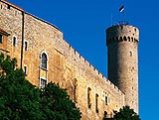 Toompea Castle & Tall Hermann’s Tower is one of Estonia's oldest and grandest architectural groupings. The castle is situated on the steep limestone coast, 50 meters above sea level. It is one of the most potent symbols of reigning power, conquered over the centuries by various nations. Today, the Estonian Parliament is housed here... Toompea Castle & Tall Hermann’s Tower is one of Estonia's oldest and grandest architectural groupings. The castle is situated on the steep limestone coast, 50 meters above sea level. It is one of the most potent symbols of reigning power, conquered over the centuries by various nations. Today, the Estonian Parliament is housed here... |
 Cathedral of Saint Mary the Virgin (Dome Church) is the main Lutheran church in Estonia and one of three functioning medieval churches. Cathedral of Saint Mary the Virgin (Dome Church) is the main Lutheran church in Estonia and one of three functioning medieval churches.The present appearance of the Cathedral is the result of much rebuilding. The original temporary wooden church is thought to have been built on Toompea Hill in 1219, and was first mentioned in 1233...  |
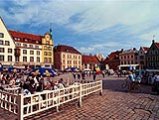 Town Hall Square
Town Hall Square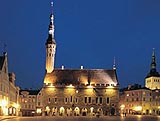 Tallinn Town Hall
Tallinn Town Hall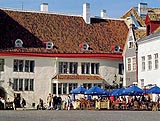 Town Hall Pharmacy
Town Hall Pharmacy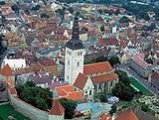

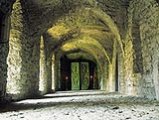
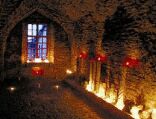
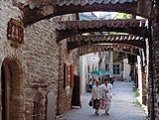
 Masters’ Courtyard
Masters’ Courtyard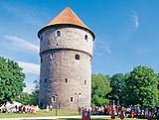
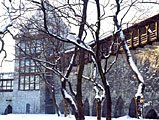
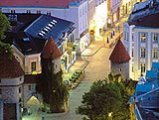
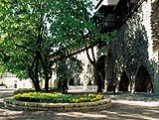
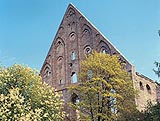 St. Bridget’s Convent
St. Bridget’s Convent 





